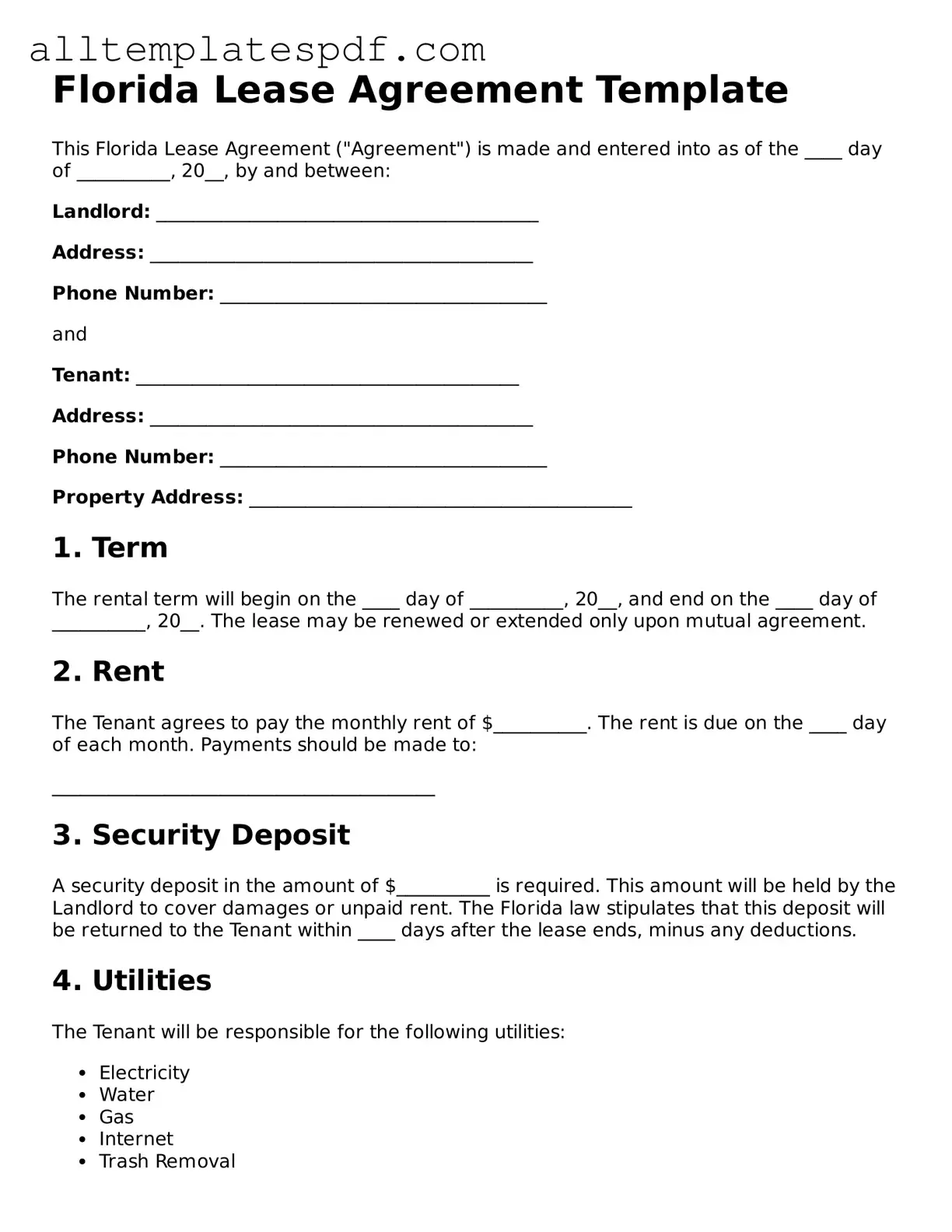Filling out a Florida Lease Agreement can be a daunting task, especially for first-time renters or landlords. Mistakes can lead to confusion, disputes, or even legal issues down the line. Here are eight common mistakes to avoid when completing this important document.
One frequent error is failing to include the full names of all parties involved. It might seem straightforward, but omitting a name can create complications. Each individual listed on the lease has specific rights and responsibilities, so clarity is crucial. Always double-check that everyone’s name is spelled correctly and included.
Another common mistake is neglecting to specify the rental term. Whether it’s a month-to-month arrangement or a year-long lease, this detail sets the expectations for both parties. Without a clear rental term, misunderstandings about the lease duration can arise, leading to potential disputes.
Many people overlook the importance of detailing the rent amount and payment due dates. It’s essential to state the exact amount due each month and when it should be paid. This information helps prevent late payments and ensures both parties are on the same page regarding financial obligations.
Additionally, some individuals forget to outline the security deposit terms. The lease should specify the amount of the security deposit, the conditions for its return, and any deductions that may be taken. This transparency protects both the landlord and the tenant and helps avoid conflicts when the lease ends.
Another pitfall is not addressing maintenance responsibilities. The lease should clearly outline who is responsible for repairs and maintenance. This can include everything from minor repairs to major issues like plumbing or electrical work. By specifying these responsibilities, both parties can avoid confusion and frustration later on.
People often skip including provisions for early termination. Life can be unpredictable, and circumstances may change. Including a clause that addresses how either party can terminate the lease early, along with any penalties, can save everyone a lot of hassle if the need arises.
Furthermore, failing to review local laws can lead to serious issues. Florida has specific regulations regarding rental agreements, and being unaware of these can result in invalid lease terms. It’s wise to familiarize yourself with local housing laws to ensure compliance and protect your rights.
Finally, many individuals do not take the time to read the entire lease before signing. Rushing through this process can lead to overlooking critical details or provisions that could affect your living situation. Taking the time to read and understand the lease ensures that all parties are informed and agree to the terms.
By avoiding these common mistakes, you can help ensure a smoother leasing experience. A well-prepared lease agreement fosters a positive relationship between landlords and tenants, setting the stage for a successful rental experience.
